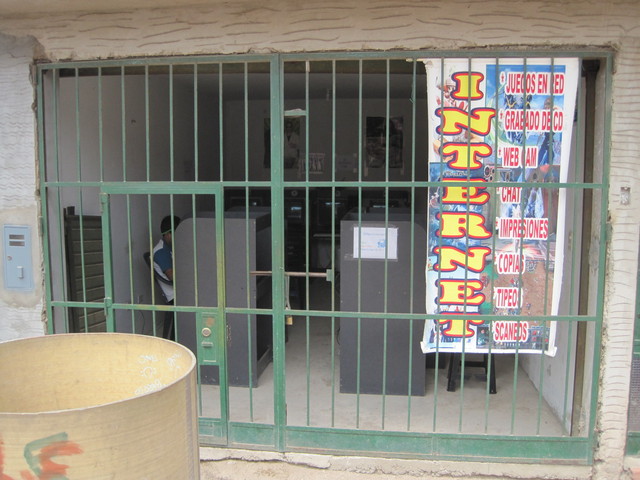Today I will be leaving my comfortable home base in Lima and moving to Villa el Salvador for 4 days, where I will get to experience firsthand what it is like to live in the same hood as the people about whom I have been writing. I will be living in the home of Antonio, the director of the Los Martincitos program where I work, with his wife and three children. They have a large house (by Villa el Salvador standards), and for $15 a day, I will get 3 meals a day and a place to sleep. Tonny, as he is called, speaks no English at all, and his wife speaks only a few words, so it will force me to practice my abysmal Spanish.My mother is not happy about my decision to move to Villa el Salvador, but I have assured her that I will not go out of the house after dark, when it is the most dangerous. I’m not sure what the Internet situation will be like there, but I will try to continue to send e-mails. I have seen a few internet cafés in Villa el Salvador, and understand they are very cheap … 1 sol, or about 30 cents, per hour. I use the term "café" very loosely, as you can see by the photo I have attached of an Internet café in Villa. If it is safe to walk to one, I will do so, and will continue to send updates.At our home base in Lima, new volunteers are constantly arriving and leaving. The number of occupants here changes on a weekly basis, as do our roomates. Each of the rooms in the house sleeps up to 6 people, in bunk beds. Most of the voluntarios here are from the English speaking countries of the U.S., the U.K., Canada, and Australia.My best friend here at the home base up until a week ago was Samantha, a 23-year-old from Ontario, Canada. She made me promise when she left that I would get on facebook while in Peru. Working on it, Sam!After Samantha left, my new best friend was Quinn, a 39 year old from New York who has a wicked sense of humor, and kept me laughing constantly. He left yesterday to travel around Peru for a few weeks. We spent our last day together at la lavanderia washing our clothes.Mikal, 25, who has been here since January, was one of the first voluntarios I met. We became friends when, shortly after I arrived, he asked me if I would help him "buzz off." Huh? That night I learned how to shave someone’s head, a skill which no doubt will come in handy someday.The food here at the home base is simple, delicious and typical Peruvian. It is served family style. Rice and some type of potato (there are 4,000 indigeous varieties of potatoes in Peru) are served at every meal, Often corn, pasta or beans are served in a stew, along with the rice and potatoes. Once, we had rice, potatoes, corn and pasta at the same meal. I have done enough carbo loading since I’ve been here to run several marathons on a moment’s notice. The corn here is called choclo , and has the most enormous kernels I have ever seen. I have attached a photo of the choclo kernels, which I pick off the cob and eat one by one, like grapes.We are warned when we arrive that we should never drink tap water, and never eat raw vegetables, fruit or fresh dairy products in Peru. I was happy to learn that the fruit at the home base is treated with a special solution that makes it safe for us to eat. Local milk may not be pasteurized, so it is best avoided. The milk we drink at the house is ultra pasteurized, has a shelf life of a year or so, and does not need refrigeration.There is a condiment served with everything in Peru, a paste made from local aji chiles. I have fallen in love with this chile paste. It is served at every meal here, and I have yet to find a food that it doesn’t pair well with. It’s not quite a substitute for New Mexico green chile, but it does the job when I need a chile fix.When a volunteer gets the dreaded "stomach thing," as we all do eventually, despite our rigorous care with eating, we are put on a diet of rice, bread and a special homemade chicken soup. We are advised not to eat any fruit, vegetables or the beloved aji (that was the hardest part for me). Usually the bug clears up with in a week. We all share pepto bismol and imodium on a regular basis.The seasoned volunteers usually initiate the new volunteers about things they need to know, as most newcomers arrive on weekends when there is no staff here who speak English. I’ll never forget my first bunkmate telling me about the "toilet etiquette" here when I first arrived. When I tell new volunteers about it, I can’t help but laugh at the look of sheer horror on their faces—the exact same look I had 4 weeks ago.I am looking forward to seeing what my new home base in Villa el Salvador will be like. Adios, amigos!
Read the rest of the blogs in this series here.



